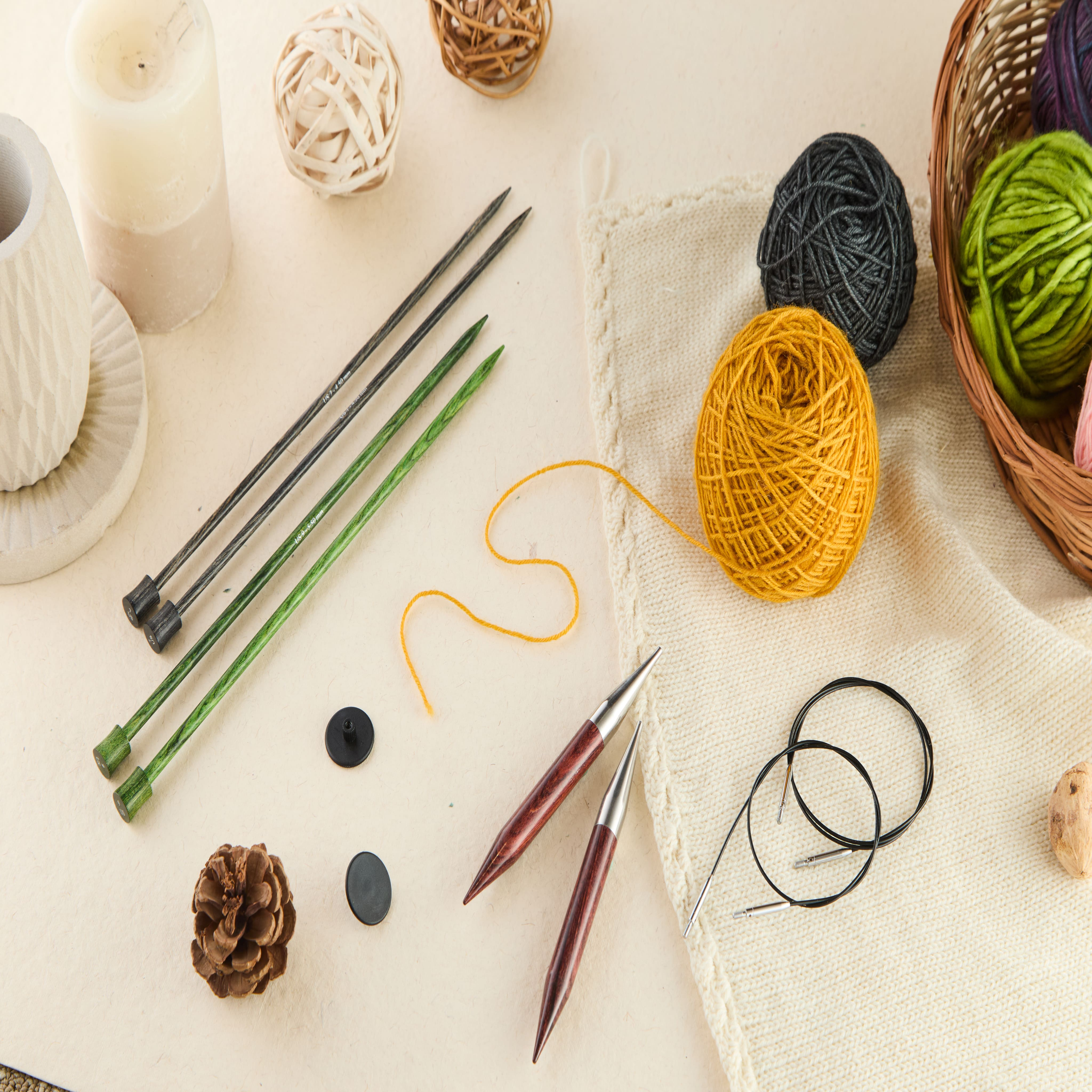Common Knitting Cast on Methods

Every knitting project starts with the cast-on, a basic yet essential step. In addition to serving as the basis for your work, this approach establishes the general tone for its flexibility, structure, and look. Knitters now, have more options when selecting the ideal technique for cast-on stitches on their knitting needles. Due to various methods, your knitting experience can be improved with different kinds of needles. Let's explore all the popular cast-on methods, how to use them, and how to become proficient.
Here are some common cast-on methods
-
Long- tail cast-on
The long-tail cast method is one of the most popular among experienced knitters because it is fast and sturdy, however, you must know how to calculate the length of yarn that you require to accommodate all the stitches in advance. In case of miscalculation, you have to start all over again. Once you have a clear understanding, then you will be able to get stitches on the needles. It is also called double-cast, continental, sling-shot, and two strands. Learn the Long-tail cast-on method through our blog.
How to do it?
- To begin, measure a yarn tail around three times as wide as your project.
- Attach it to the needle in a slip knot.
- Using your left hand, loop the working yarn around your index finger and the tail around your thumb.
- Pull the needle through the thumb loop after inserting it beneath the thumb loop and over the index finger.
- Tighten the needle's loop.
Best uses
- For designs that require a strong yet flexible edge, such as scarves, caps, and sweaters, the long-tail method is perfect. It provides a smooth start for seamless round knitting and works nicely with circular needles and DPN.
Tips
- Uneven loops can result in a messy edge, so practice to get constant tension.
- If you are unsure how long the tail will be, leave extra yarn; you can always attach it later.
-
Knit Cast-on
This method is perfect for beginners because it is one of the simplest techniques. The new knitter easily learns the knit stitch simultaneously. It is also known as knitted cast-on and knitting-on. Learn this method through our blog on how to make stitches with the knitted cast-on technique.
How to do it?
- 1. Tie your needle in a slip knot to begin.
- As though knitting, insert the right-hand needle into the slip knot.
- To make a new loop, wrap the yarn around the needle and pull through.
- Repeat after attaching the new loop to the left-hand needle.
Best uses
- It is one of the better choices for many projects because it's stretchy and easy to form.
- You can work with any needle type including double-pointed knitting needles, but beginners must practice it on single-pointed ones.
Tips
- You must keep the loop loose, to prevent a tight edge that could make the first row challenging to work into.
-
Cable Cast-On
This technique is similar to the knit-cast-on method. The only difference is the placement of the knitting needle to make a new stitch. Because of its strong, structural edge, this technique is suitable for projects that need extra stability.
How to do it?
- Using the left-hand needle, start with a slip knot.
- Place the right-hand needle between the left-hand needle and the first stitch.
- To create a new loop, wrap the yarn around the right-hand needle and pull through.
- Attach this loop to the needle on the left.
- Do it again, put the needle between the final two stitches.
Best uses
- To form a nice, even, and cable-looking edge or any project that needs a hard edge- the cable cast-on method is a perfect choice.
Tips
- It is important to keep the yarn tension even, to ensure the edges stay flexible and strong.
-
German Twisted Cast on
This technique is a great choice, particularly for socks. It is similar to a long tail but brings an extra twist that gives the method more elasticity. It is also known as Norwegian cast-on. Refer to our blog on how to do the German twisted cast-on - step-by-step knitting tutorial.
How to do it?
- Start with a simple slip knot.
- While holding the yarn like a slingshot, the tail of the yarn over the thumb and the working yarn over the index finger.
- Maintain the tension on both strands of yarn.
- Then, bring the needle under both strands of yarn around your thumb.
- Now, bring the needle up behind the loops and down through the middle of the thumb loop.
- After that, catch the yarn from the index finger with the needle.
- Lastly, bring the needle back and drop the loop from the thumb.
Best uses
- It is perfect for creating an extra stretch in socks, hats, or gloves.
Tips
- Use the longer tail and maintain the tension consistently.
Your knitting project can succeed or fail depending on the cast-on technique you choose. Every method, from the simple knitted cast-on to the intricate cable cast-on, has special advantages for various knitting needles and project kinds.
You can try these methods on KnitPro's DPNs or knitting needle set and see which ones suit your knitting style.
Visit:https://knitpro.livepositively.com/common-knitting-cast-on-methods/
- Educação
- Course
- Books
- Drawing
- Seção
- Film
- Fitness
- Food
- Jogos
- Gardening
- Health
- Início
- Literature
- Music
- Networking
- Outro
- Programming
- Religion
- Shopping
- Sports
- Curriculm
- Wellness


